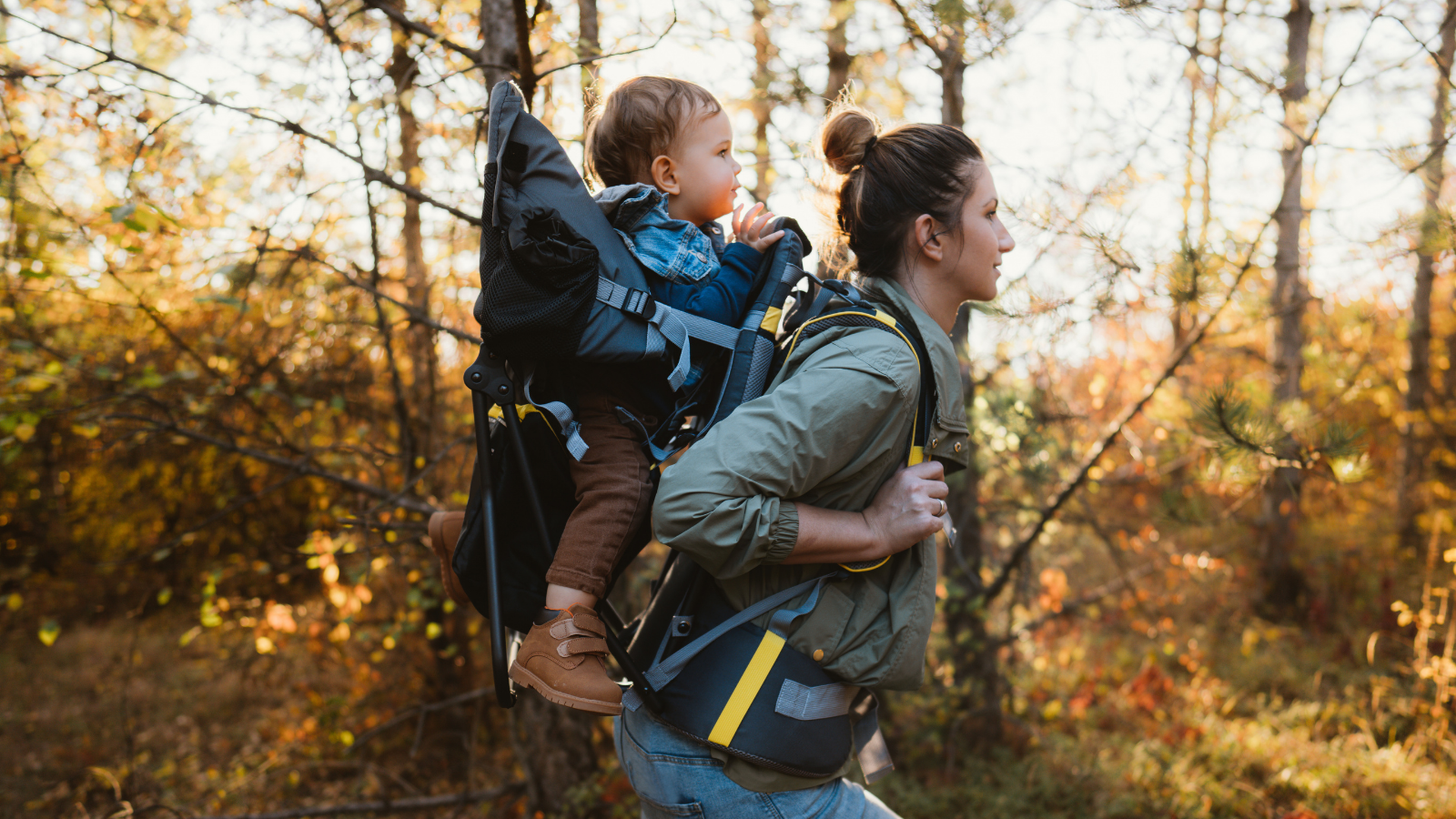Babies and toddlers can bring a lot of joy and fun to a camping trip. As with every stage in a child’s development, the child will require different things or have different needs – and different hazards. Follow these safety tips and be prepared so that everyone has a good time.
Getting there.
In a previously published article we went over the pros and cons of different types of RVs when it comes to families with very young kids. It boils down to the fact that many motorized RVs, though they have seatbelts, are not the safest option for traveling with young children who need car seats or boosters. This is for two reasons. One, all seats don’t face forward in a motorized RV and likely don’t have anchor points, as many vehicles do. Second, RV seats are not as securely fastened to the floor as in traditional vehicles. So the best option for young families is to utilize a tow vehicle and pull an RV. This approach also gives you flexibility once you arrive at your destination and want to go out exploring beyond the campground.
If your destination is more than a couple hours away, take the time to stop and let the kids get out of the car for a change of scenery. It’s a good idea for adults, too, to stretch their legs routinely during a car trip as it’s better for your overall health. If everyone can go longer, then keep going. Expect breaks to last for 30-60 minutes. Get the kids a snack or bottle, change any diapers, and get some sustenance yourself. Maybe find a park for them to go play on for 15 minutes.
Before leaving on your trip, it’s a good idea to see what attractions are along your route. Incorporate those attractions as part of your travel plan. Also, plan for the trip to last a lot longer than according to the Google Map estimate. There are any number of reasons your baby or toddler will need to take a detour; some of it can be planned but some of it can’t be planned. Leave lots of time in your schedule and adjust your expectations beforehand.
At the campsite.
While the camper is being parked and situated, keep young children either in their car seats or in a safe place where they can’t go wandering off. That could mean in a stroller, in a pack n’play, or in a little fenced-in yard – any or all of which you brought along and unpack first. This is also where you can put kids when both parents are cooking or getting the camper set up. Otherwise, parents will need to take turns watching the kids. Figure out this plan ahead of time yet be flexible once you’re at the campsite – things might change or have to wait until later based on how the kids are acting.
It’s very important to never leave a young child unattended near a campfire or grill that is in use. Just like at home, keep hazardous items stored away or out of reach of little hands.
And also just like at home, you need to baby proof the interior of the RV. You may need a gate for putting across the doorway if little ones can reach the handle. Look for outlets, add locks to cabinet doors (if needed), and block of areas you don’t want your little one to get into.
This article gives you a packing checklist if you have young children.
On the trail.
A soft front pack or backpack can work well enough for babies, but toddlers usually need something more robust… and so do you. A hiking backpack with structure, padded shoulder straps, and a waist strap that can buckle and situate your growing kiddo’s weight on your hips rather than your back is a good idea. However, let toddlers get out and explore on their own two feet, too, and be prepared for a slower pace.
Choose hiking trails with a length that is doable for your level of physical capability as well as your baby or toddler’s schedule and personality. Babies who are very laid back won’t really care how long they are riding along or where they take a nap. Other babies may need their napping spot with their blankie. You know your child best and what he or she can handle. That being said, this is a good opportunity to expose your child to new things, grow in your relationship together, and help teach your child to go along with the punches.
Make sure to bring plenty of fresh water (if the baby is old enough) and yummy snacks. A sun hat will help protect your young child’s eyes and remember the sunscreen and bug spray. For bug spray, spray it onto the child’s clothing rather than on them directly. Mosquitoes and ticks have had heavy years recently in Michigan, so bug spray is essential to put on before you spend time outside as well as during your time outside. Layers are also key to help ensure your baby is kept at the appropriate temperature throughout the day.
Watch for low branches during walks through the woods, abide by all signs, and tread carefully. The safety of your baby or toddler depends on you.
Enrich family life and bestow a love for the outdoors, family time, and camping in your children when they are young. It’s more to pack and there are more logistics to figure out, but it gets easier with each journey. And your kids will thank you.

